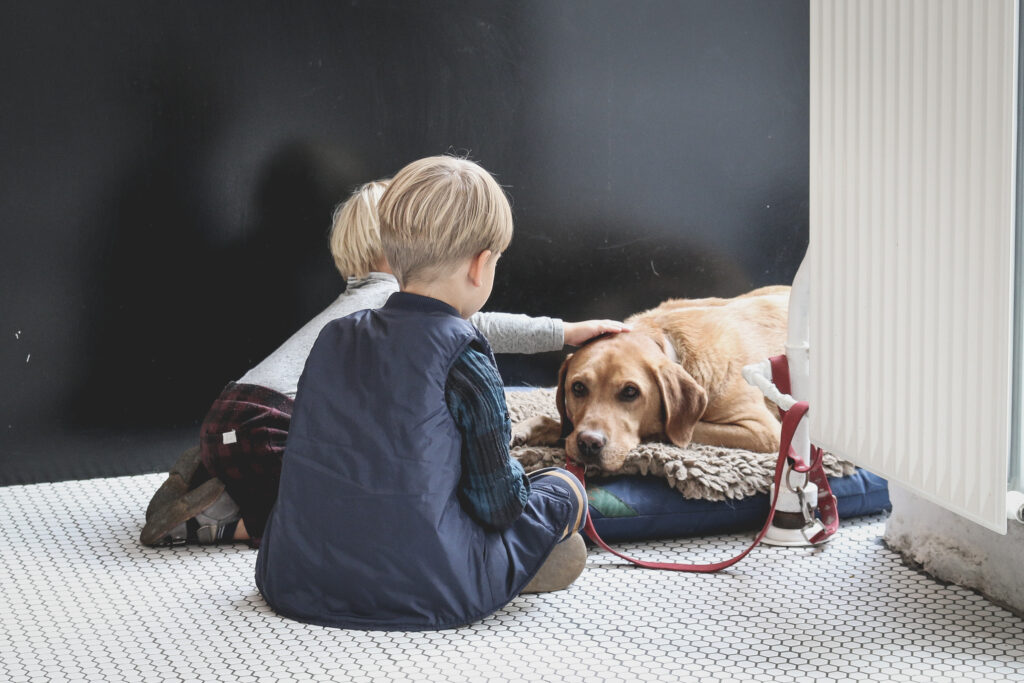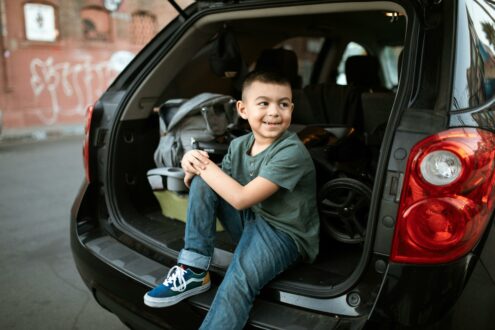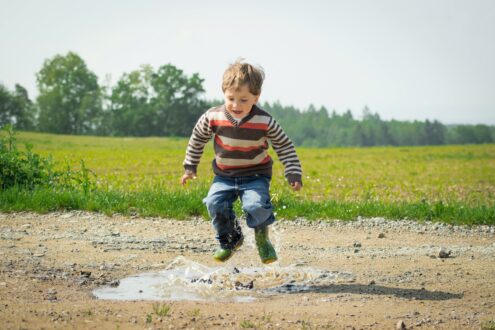Teaching your child to take care of a family pet is necessary not just for the pet and the family, but it also provides your child a sense of responsibility and helps them feel capable of tackling a difficult task.
Set an Example
Setting an example for youngsters is an effective method to educate them on how to engage with animals. Kids are always learning and watching adults, and will frequently imitate what they observe. Monitor your personal relationships with animals to provide a positive example for them. This is an excellent way for youngsters to learn how to approach and pet animals while remaining kind.
Teach Them How to Interact With Pets
One of the most essential lessons you can teach your kids about animals is how to engage with them. You may help them by providing resources with photographs, such as photos of dogs who appear happy or comfortable versus photos of dogs who are agitated, terrified, fearful, or violent and should not be approached. When it comes to smaller animals, for example, chinchillas, you can educate them to recognise abnormal behaviour by making sure they pay attention to all the common chinchilla sounds and noises and act accordingly to get help for their little friend. This will help them recognize when anything is wrong.
How to Pet an Animal
It’s necessary to demonstrate to your kid how to correctly approach their pet. Make sure that they remain calm and speak softly so the animal does not feel intimidated. Allow the pet to sniff the child’s hand by holding it out. You can pet them on the back or neck, but make sure to check if they are friendly first by petting them on the chest or beneath the chin. Different dog breeds, for example, might have varying reactions when being approached so it might be useful to see these helpful tips first. But most importantly, as an adult, you should keep an eye out for signs of fear or potential aggression in pets when they are around your child.
Show Ways to Help Animals
We can educate children to aid animals in a variety of ways, and doing so will teach them to be responsible, compassionate, and capable of making a difference. Bird feeders, recycling, and not littering are all good areas to start teaching youngsters about the environment and their responsibilities. They may also aid animals by accompanying you to local shelters to give towels, pet supplies, and food.

Set Rules
Several rules should be introduced to children as soon as possible. Generally, cats and dogs are the most common family pets, and establishing guidelines will ensure that both the child and the pet are safe. While adults may consider fundamental principles to be self-evident, it is critical to teach children basic rules and explain why they are vital. For example, do not grab a pet’s tail or ears; do not jump on or squeeze a pet, since this can be frightening and induce panic; and while speaking to animals, use a calm, quiet voice.
Praise Them When They Are Being Kind to Pets
Praise your children for their patience, gentleness, and animal kindness. This will gain their confidence and make them like the process of taking care of the pet itself, as well as teach them how to cope with their responsibilities.

Give Them Responsibilities
There are several advantages to assigning pet-related chores to youngsters. Simple tasks such as aiding in the feeding and watering of pets, playing catch, grooming, or taking them for walks may educate children about their responsibilities and take care of the pet, although they will almost certainly need to be handled under observation. It’s also crucial to instill in your youngster the value of veterinary appointments.
Teach Them How to Overcome Fear
If a child is ever terrified of an animal, advise them to keep a cool head and to be motionless. They should strive hard not to scream or escape if a strange animal approaches them, and they should avoid establishing visual contact with that animal. If the animal continues to approach, they should act bravely and try to chase them away and make sure they look for an adult right away.
Seek Permission To Interact With a Pet
When youngsters see other pets, they often get enthralled and rush up to pet them. Teach youngsters to always seek permission before approaching an animal. They’ll need approval from both their parents and the owner of the pet. If there is no adult around, a youngster should never approach an unfamiliar pet.
Remember that setting a good example as a responsible pet owner is the best way to teach your kids how to be responsible pet owners. Even if you have a hectic day, find time to walk or brush your pet, bringing this fact to your child’s notice in a positive way. Children will be motivated to follow you if you use patience, persistence, and positive reinforcement.
Collaborative







Leave a Reply